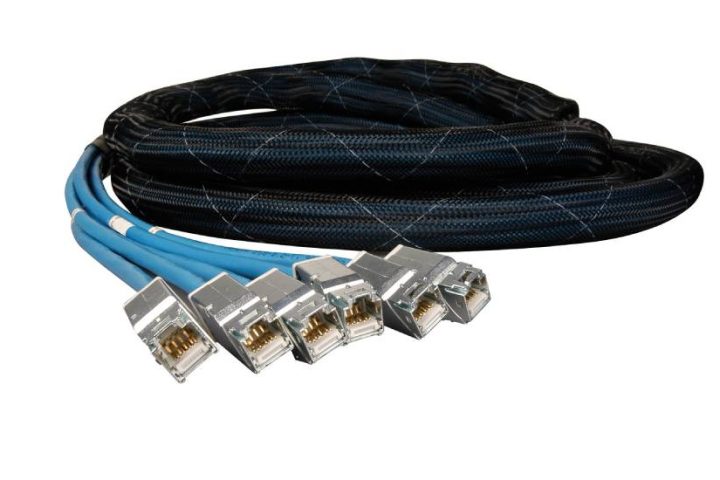Optical fibre is often regarded as the cabling medium of choice due to its great flexibility, scalability and bandwidth capabilities. Whilst fibre certainly has its strengths, copper cabling remains essential in modern network infrastructure. Narender Vasandani of Siemon explains why both fibre and copper cabling will continue to co-exist
The rising demand for higher network bandwidth driven by the latest advancements in emerging technologies has seen fibre cabling und new fibre optic technologies move into focus in recent years. Some might even question whether copper cabling will continue to play a role in the long-term future of network cabling deployments. A closer look at modern data centre and smart building environments however shows, that both copper and fibre will continue to play a part. The reason lies in the balance of optimal performance and cost-effectiveness.
Fibre optic cabling transmits data over extended distances due to its high bandwidth capacity, low signal attenuation and immunity to electromagnetic interference (EMI). Fibre is therefore ideally suited for campus-wide deployments, interconnecting telecommunication rooms, in data centre backbone connections and in between data centres. It also dominates in environments that require enhanced security, since it provides a higher level of data protection compared to copper, safeguarding critical information.
Fibre plays a particularly important role in the data centre backbone, where speeds are increasing to 400 and 800 Gb/s. Switch-to-switch connections benefit from MPO fibre technology that enables links to ‘grow’ as data centres migrate to higher speeds. Base-8 MPO parallel fibre for example provides an easy migration path, with Base-8 MPO OM4 cabling supporting 100Gb/s, 200GB/s and 400Gb/s technologies in enterprise data centres and Base-8 MPO singlemode cabling enabling easy migration to 400Gb/s, 800Gb/s and future speeds in cloud data centres.
On the other side, copper’s unique ability to serve data alongside power over the same infrastructure makes it an indispensable asset in any new or existing facility. This is particularity true for smart buildings, since these are becoming increasingly interconnected. In building automation systems copper cabling enables seamless communication between sensors, controllers, and actuators that control essential systems like HVAC, lighting, and security. Power over Ethernet (PoE) technology makes this possible. The good news is that PoE is no longer limited to low-power devices. Power-hungry applications such as wireless access points and IP cameras can now be served by PoE+ and PoE++ that deliver up to 100 watts. The advantage of PoE lies in lower cable complexity. Dedicated power sources and power cables are no longer needed, reducing the costs and time for material, installation time and labour.
In the data centre, copper continues to play a vital role, specifically in short-distance links, such as point-to-point connections between switches and servers or switches and other switches within the same rack or across adjacent racks. Here, copper offers similar performance to fibre but without expensive fibre transceivers and fibre terminations, enabling faster, reliable and low-latency connections. Commonly referred to as direct attach cables, these point to point twinax copper cabling assemblies can deliver network speeds of up to 800 Gb/s to support emerging applications like high-performance computing (HPC) and artificial intelligence (AI) clusters.
Passive DACs, are typically deployed in short-reach 0.5m to 5m connections, offering low cost, low power and low latency. Active Copper Cable assemblies can cover up to 7 m providing better performance over longer copper distances. They are more affordable than fibre but are slightly more power hungry compared to passive DACs. Active Electrical Cable (AEC) are well suited for medium range connections but they consume more power and are more expensive than ACC or passive DAC.
Whereas fibre is ideally suited to cover long distance connections and in environments where EMI is a concern, copper cabling certainly has its place in short-reach applications such as data centre interconnections and in environments where power and data must be provided over the same infrastructure.

























